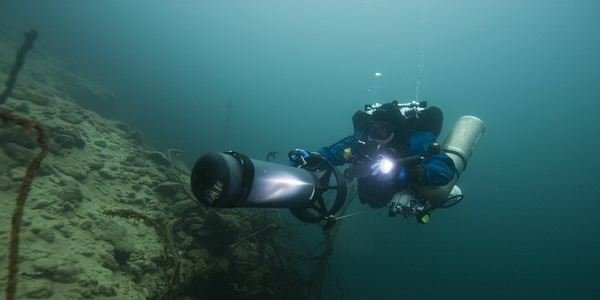Barotrauma

Barotrauma is tissue damage caused by changes in the volume of gases in body cavities due to changes in pressure.
Injuries occur in air-filled cavities such as the lungs, ears, sinuses, gastrointestinal tract, air cavities in the teeth, and the space under the diving mask.
Symptoms most commonly include ear pain, dizziness, hearing loss, sinus pain, nosebleeds, and abdominal pain.
Respiratory dysfunction and loss of consciousness create a life-threatening condition and may develop due to alveolar rupture and pneumothorax.
The diagnosis is made clinically, but sometimes imaging studies are also necessary.
Treatment in most cases is supportive, but may include decongestants and analgesics for ear and sinus involvement, or steam inhalation and drainage of the pleural cavity for pneumothorax.
If an arterial gas embolism develops, recompression therapy in a pressure chamber is applied.
Observance of diving safety rules and prophylactic use of decongestants can reduce the likelihood of injury from pressure changes.
The highest risk of barotrauma exists at a depth of more than 9 meters.
Risk increases with any condition that may interfere with pressure equalization such as sinusitis, Eustachian tube blockage, congenital anomalies, infectious process.
Ear injuries to the ear as a result of altered pressure account for about 1/3 of all diver injuries.
If a diver inhales air or another gas at great depth and does not allow it to release on the ascent to the surface, the expanding gas may overinflate the lungs.
What are the symptoms?
The manifestations of the condition depend on the localization of the damage.
All types of trauma of this type develop almost immediately after the change in pressure.
Some cases of non-fatal disorders, if they occur at a greater depth, can incapacitate the swimmer and become an indirect cause of his drowning.
During diving, prolonged deep breath holding causes compression of the lungs, which in some cases can lead to a decrease in the residual volume of the organs.
This condition is associated with edema of the pulmonary mucosa, vascular stasis and bleeding, which during recovery manifests clinically as breathing disorders and hemoptysis.
When a person breathes in compressed air, the volume of their lungs increases due to rising to the surface too quickly, for example in scuba diving, or due to not exhaling enough it can cause alveoli to inflate and rupture, leading to a pneumothorax.
Diving can damage the outer, middle and inner ear. Usually the diver feels numbness and pain during the descent.
If the pressure does not equalize quickly, bleeding from the middle ear or a ruptured eardrum may occur.
On examination of the external auditory canal, it is possible to notice blood collected behind the eardrum – hemotympanum and lack of mobility when introducing air with a pneumatic otoscope. Conductive hearing loss is usually seen.
Treatment of barotrauma
In the majority of cases, injuries caused by the altered pressure resolve spontaneously and require only symptomatic treatment and outpatient observation.
In life-threatening conditions, treatment begins with stabilization, by providing ventilation with 100% oxygen, intubation is performed in the presence of signs of development of respiratory failure.



